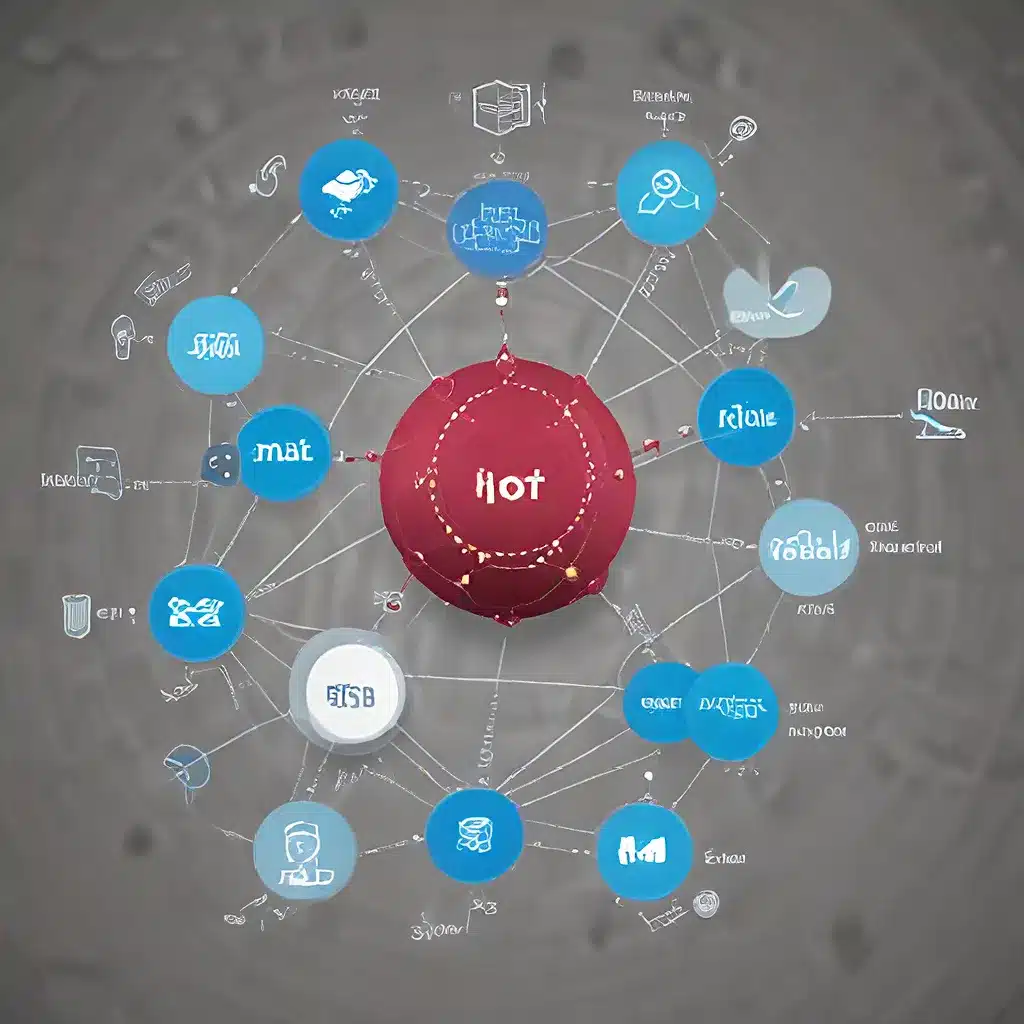
The Rise of Sensor Networks and IoT
Sensor networks and the Internet of Things (IoT) have revolutionized the way we interact with the world around us. These interconnected systems of sensors, devices, and communication protocols have paved the way for a wide array of innovative applications, from smart home automation to industrial process monitoring and optimization. As the IoT ecosystem continues to expand, the need for efficient resource allocation strategies has become paramount, especially in the context of decentralized service provisioning.
Sensor-networks.org is a leading resource for professionals, researchers, and enthusiasts interested in the advancements and challenges within the realm of sensor networks and IoT. In this comprehensive article, we will explore the various resource allocation strategies that have emerged to address the complexities of IoT service provisioning, with a focus on decentralized approaches.
Decentralized IoT Service Provisioning
Traditional centralized IoT architectures have inherent limitations, such as single points of failure, scalability issues, and high latency. To overcome these challenges, the concept of decentralized service provisioning has gained significant traction. In a decentralized system, IoT devices and services are organized in a distributed manner, allowing for more flexible and resilient operations.
One of the key aspects of decentralized IoT service provisioning is the efficient allocation of resources, such as computing power, storage, and network bandwidth. This is where decentralized resource allocation strategies come into play, enabling IoT systems to dynamically adapt to changing demands and optimize overall performance.
Optimization Techniques for Resource Allocation
Researchers and industry experts have explored various optimization techniques to address the challenges of resource allocation in decentralized IoT environments. These approaches aim to maximize the utilization of available resources while ensuring fairness, scalability, and energy efficiency.
Game Theory: One prominent approach is the application of game theory to model the interactions and decision-making processes of IoT devices and service providers. By formulating the resource allocation problem as a game, researchers can leverage game-theoretic principles to develop decentralized algorithms that achieve near-optimal outcomes.
Reinforcement Learning: Another area of interest is the use of reinforcement learning techniques, where IoT devices and services learn to make optimal resource allocation decisions through trial-and-error and feedback mechanisms. This adaptive approach can help IoT systems adapt to dynamic environments and user demands.
Blockchain and Distributed Ledgers: The integration of blockchain and distributed ledger technologies has also been explored for decentralized resource allocation in IoT. These technologies enable secure, transparent, and tamper-resistant recording of resource allocation decisions, fostering trust and accountability within the IoT ecosystem.
Practical Considerations and Case Studies
When implementing decentralized resource allocation strategies for IoT service provisioning, several practical considerations must be addressed. These include energy management, network topology design, security and privacy, and scalability.
Energy Management: IoT devices often have limited battery power, making energy-efficient resource allocation a critical concern. Techniques such as dynamic voltage and frequency scaling (DVFS), task offloading, and energy harvesting can be employed to optimize energy consumption and prolong the operational life of IoT devices.
Network Topology Design: The choice of network topology, such as mesh, star, or hybrid configurations, can significantly impact the performance and resilience of decentralized IoT systems. Researchers have explored adaptive routing algorithms and self-organizing network topologies to address the dynamic nature of IoT environments.
Security and Privacy: Decentralized IoT systems must also prioritize security and privacy to protect against cyber threats and ensure the integrity of data and resource allocation decisions. Techniques like secure multi-party computation, blockchain-based access control, and privacy-preserving data analytics have been investigated to enhance the overall security posture of decentralized IoT architectures.
Scalability: As the number of IoT devices and services continues to grow, scalability becomes a crucial concern. Decentralized resource allocation strategies must be designed to handle large-scale deployments without compromising performance or efficiency. Advancements in edge computing, fog computing, and hierarchical resource management have contributed to addressing the scalability challenges in decentralized IoT environments.
To illustrate the practical application of decentralized resource allocation strategies, consider the following case study:
Smart City Streetlighting: In a smart city scenario, a decentralized IoT network of streetlights and sensors is deployed to optimize energy consumption and improve public safety. By leveraging game-theoretic resource allocation algorithms, each streetlight can dynamically adjust its lighting intensity based on factors such as pedestrian activity, weather conditions, and energy availability. This decentralized approach ensures efficient use of resources, reduced energy costs, and improved responsiveness to changing environmental conditions, without relying on a centralized control system.
Conclusion: The Future of Decentralized IoT
The advancements in decentralized resource allocation strategies for IoT service provisioning have paved the way for a more resilient, efficient, and scalable IoT ecosystem. By harnessing the power of game theory, reinforcement learning, and blockchain technology, IoT systems can now adapt to dynamic environments, optimize resource utilization, and enhance overall system performance.
As the IoT landscape continues to evolve, the importance of decentralized approaches will only grow. By embracing these innovative resource allocation strategies, IoT service providers and device manufacturers can unlock new opportunities, drive technological progress, and shape the future of sensor networks and the Internet of Things.